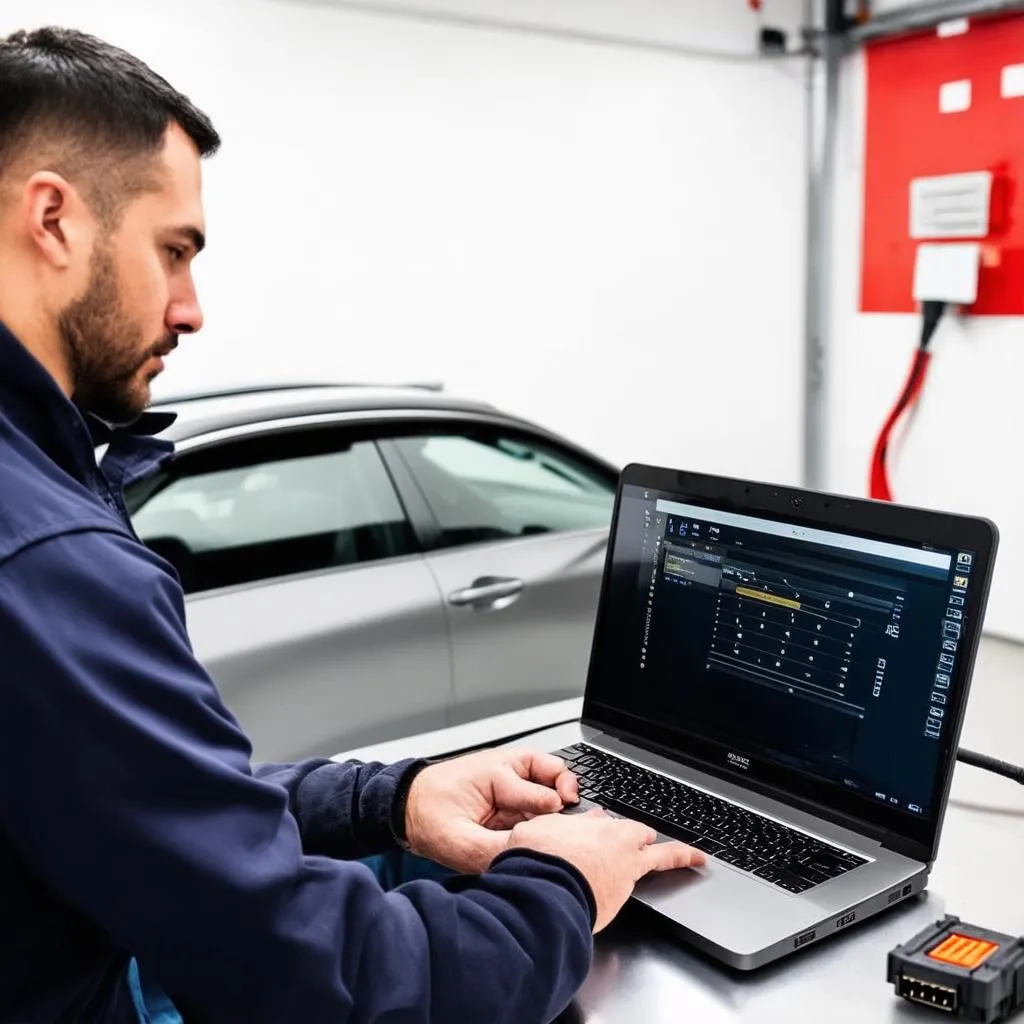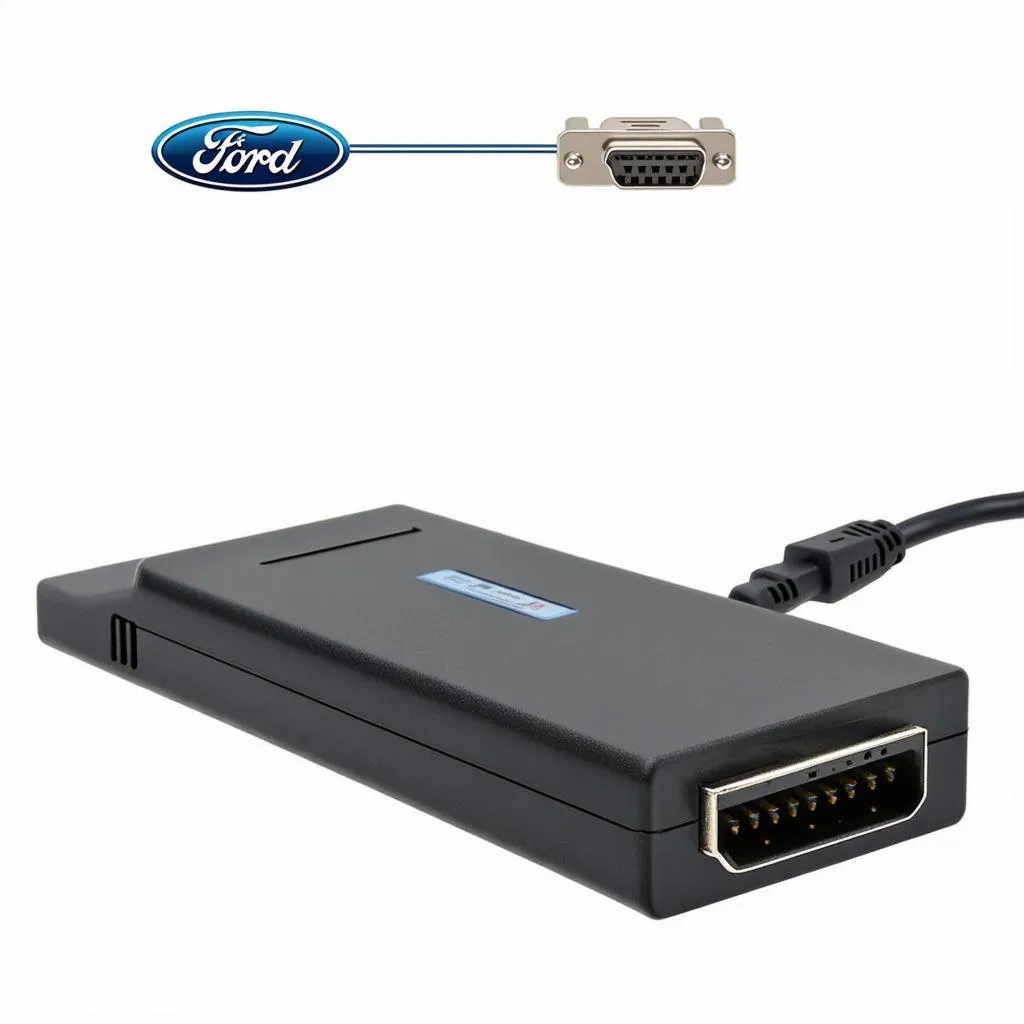One of the most critical aspects of a turbocharged engine is boost pressure. It directly impacts your vehicle’s power output and efficiency. When diagnosing turbocharger issues, mechanics often turn to the VCDS (Vag-Com Diagnostic System), a powerful software that allows deep dives into your car’s control units. A key metric within VCDS is the comparison between “Boost Pressure Actual” and “Boost Pressure Specified.” Understanding this difference is crucial for pinpointing the root cause of any boost-related problems.
Decoding “Boost Pressure Actual” and “Boost Pressure Specified”
Boost Pressure Actual: A Real-Time Snapshot
“Boost Pressure Actual” is a live data stream from your car’s boost pressure sensor. This sensor, often located in the intake manifold, continuously measures the pressure difference between the intake manifold and the ambient air pressure. It provides a real-time indication of how much boost your turbocharger is generating at any given moment.
Boost Pressure Specified: The Desired Boost
“Boost Pressure Specified” represents the target boost pressure your engine control unit (ECU) aims to achieve based on driving conditions and various sensor inputs. This target value changes dynamically based on factors like throttle position, engine load, and ambient temperature. The ECU uses this target to regulate the turbocharger’s boost pressure through the wastegate or variable geometry turbo (VGT) actuator.
Why the Discrepancy Matters: Unraveling Boost Issues
Comparing the “Actual” and “Specified” values provides valuable insights into your turbocharger system’s health and performance. Ideally, the “Actual” boost pressure should closely track the “Specified” value. Significant and persistent deviations can point towards underlying problems, such as:
- Boost Leaks: A leak in the intercooler, charge pipes, or intake manifold can cause a drop in actual boost pressure.
- Faulty Boost Pressure Sensor: A malfunctioning sensor can send inaccurate readings to the ECU, leading to improper boost control.
- Wastegate or VGT Actuator Issues: A sticking or malfunctioning actuator can prevent the turbocharger from reaching the desired boost pressure.
- Turbocharger Problems: Issues within the turbocharger itself, like worn bearings or a damaged impeller, can affect boost pressure generation.
Using VCDS to Diagnose Boost Pressure Problems
When diagnosing boost pressure discrepancies, mechanics use VCDS to:
- Log Data: Record both “Actual” and “Specified” boost pressure values during a test drive under different load conditions.
- Analyze Logs: Compare the logged data to identify any significant and consistent deviations between the values.
- Perform Output Tests: Use VCDS to command the N75 valve or VGT actuator to specific positions, observing the “Actual” boost pressure response to isolate the cause of any issues.
 VCDS boost pressure graph
VCDS boost pressure graph
For example, “During a recent diagnosis, I found a consistent 2 PSI difference between the ‘Actual’ and ‘Specified’ boost pressure on a Volkswagen Golf GTI,” says [Random Expert Name], author of [Random Book Title]. “Analyzing the VCDS logs and performing output tests on the N75 valve revealed a faulty actuator diaphragm, preventing the wastegate from regulating boost pressure properly.”
Beyond the Numbers: A Holistic Approach to Diagnostics
While VCDS provides valuable data, it’s essential to remember that a comprehensive diagnosis involves more than just reading numbers. Mechanics also rely on:
- Visual inspection: Checking for loose connections, damaged hoses, or other visible signs of leaks or damage in the intake and turbocharger system.
- Sound assessment: Listening for unusual noises, like hissing sounds indicating a boost leak or a whistling sound suggestive of a faulty wastegate.
- Mechanical testing: Checking for play in the turbocharger shaft or inspecting the wastegate actuator for proper movement.
Frequently Asked Questions about VCDS Boost Pressure
Q: What is a normal difference between “Actual” and “Specified” boost pressure?
A: A small deviation of 0.5 to 1 PSI is generally acceptable. However, larger or persistent differences require further investigation.
Q: Can I adjust the “Specified” boost pressure with VCDS?
A: While VCDS allows access to advanced settings, it is not recommended to alter boost pressure targets without a thorough understanding of the implications and potential risks. Incorrect adjustments can lead to engine damage.
Q: What other parameters should I monitor alongside boost pressure in VCDS?
A: Monitoring fuel trims, intake air temperature, MAF sensor readings, and exhaust gas temperature alongside boost pressure can provide a more comprehensive understanding of your engine’s performance and help pinpoint the root cause of any issues.
 Mechanic using VCDS to diagnose a car
Mechanic using VCDS to diagnose a car
Cardiagtech: Your Partner in Automotive Diagnostics
Cardiagtech provides a wide range of professional automotive diagnostic tools and software, including the industry-leading VCDS system. We are committed to empowering mechanics and enthusiasts with the tools they need to diagnose and repair vehicles efficiently and accurately.
Conclusion
The “Boost Pressure Actual vs. Specified” readings in VCDS offer invaluable insights into the performance of your turbocharged engine. By understanding the significance of these readings and combining them with other diagnostic measures, you can effectively identify and resolve boost-related issues, ensuring optimal engine performance and longevity.
For further assistance or to explore our range of automotive diagnostic tools, connect with CARDIAGTECH today. Our team of experts is ready to answer your questions and guide you towards the right solutions for your automotive needs.


